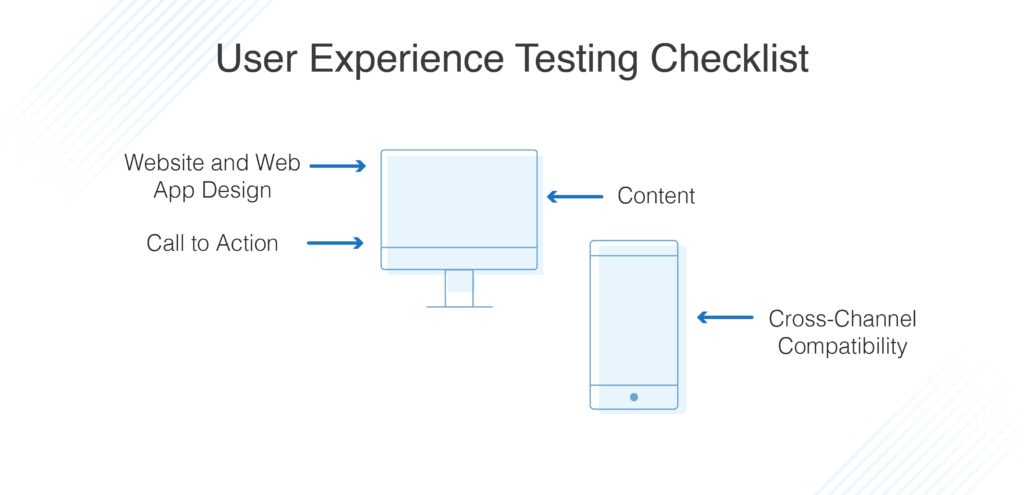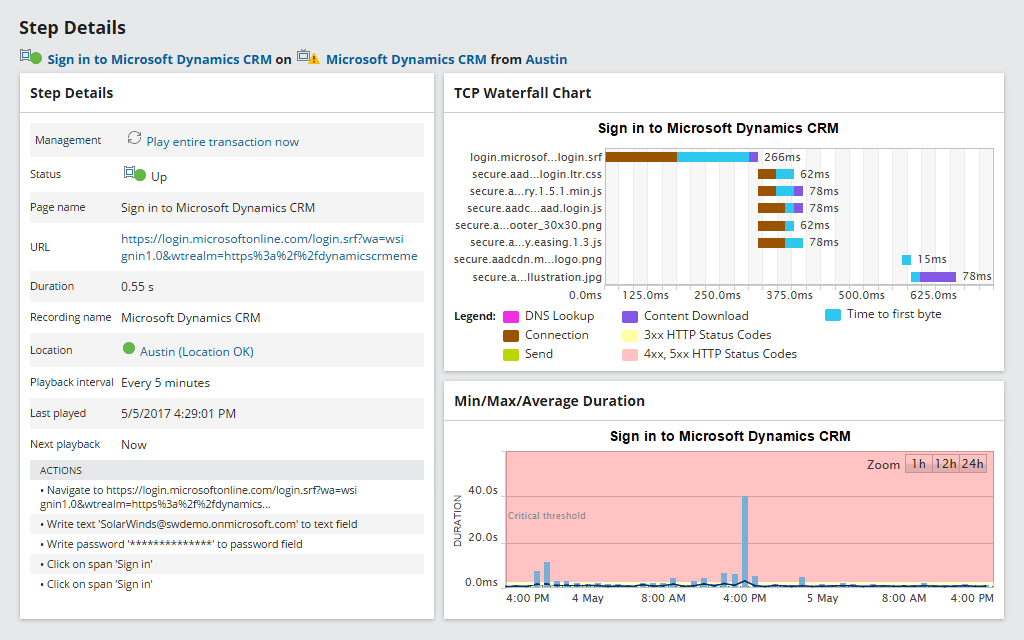Website users have higher expectations now than ever before, and many companies find they must adopt new technologies to stay competitive in our digital world. Because of this, user experience testing and optimizing website user experience has become an increasingly important part of developing and maintaining a website or web application.
This guide lists the best website user experience testing methods to help your company strategically develop the optimal user experience. The most efficient and reliable way of implementing these user experience optimization tips is by using user experience testing tools like SolarWinds® Web Performance Monitor (WPM). WPM is one of the best user experience web testing tools on the market, helping you find and fix internal and external website and application performance issues quickly. A 30-day free trial is available.
The Importance of User Experience Web Testing and Optimization
Since most consumers rely heavily on websites when deciding to make a purchase or enlist a company’s services, brands simply can’t afford to fall behind their competitors. An effectively optimized website user experience will help ensure you aren’t losing customers because of ineffective website design, and can help your company drive SEO, lead generation, and other critical attributes for the success of your business.
User experience optimization is informed by user experience testing. The right website user experience testing tools can help you identify why customers are currently being lost and inform how your website or web app can be improved upon, to boost retention and conversion rates. Website user experience optimization goes beyond site design, which can make detecting problematic areas challenging. User experience testing tools can be especially useful because they can assist you in identifying areas of your web application or website that are impacting user experience often without you even realizing it.
What Is User Experience?
When a user visits a website, their experience is determined by several factors determining whether the experience is satisfactory and directly impacting conversion rates. The most important of these factors is speed. If your web application or website fails to load quickly enough, your potential visitors will leave before they’ve even fully arrived. The speed of your website accounts for your visitor’s first impression, because it’s the first thing they experience.
Other key factors with an impact on user experience include:
- Usefulness: Your content should answer the visitor’s questions and be thorough and original if possible.
- Usability: Your website or web app should be easy to use and navigate.
- Desirable: Your web design should reflect your brand and should create engagement.
- Accessible: Your content should be discoverable and accessible to everyone.
- Credible: Your content should convey a sense of authority and trustworthiness.
Thousands of components can affect overall success, ranging from the quality of images and load time to font size and the coherency of your site map. To understand which of these components could be impacting your user experience, it’s crucial to conduct comprehensive user experience web testing.
User Experience Testing Checklist
This user experience testing checklist covers the most important aspects contributing to user experience. This list also provides suggestions for which user experience testing methods you should be using to inform your optimization strategy for each of these factors.

Website and Web App Design
Many companies budget a huge amount of money for marketing spend, in an attempt to generate as much traffic as possible to their site or application. However, if your visitors aren’t impressed by the website or app itself, this cost may be wasted. One of the most effective ways of reducing your bounce rate is by optimizing your landing page user experience, because the landing page is the visitor’s first impression of your site.
A key component of successful website and web app design is keeping loading time to an absolute minimum. According to some estimates, about half of mobile website visits are abandoned if the page takes upwards of three seconds to load. With many competitors able to provide the same information, visitors are unlikely to wait if your page is slow to load.
In addition to keeping page load times down, you can improve web design and user experience by establishing consistency across your site and avoiding unnecessary content. Simple and accessible sites are more likely to retain visitors and using the right amount of white space on your pages can help direct your visitors’ attention to important elements, like your call to action.
To test how effective your web design is, we recommend utilizing user experience testing tools with behavior analytics. Testing and analyzing user behavior can help you pinpoint when and why visitors decide to abandon your site or app. For example, you might find visitors never make it past the landing page, which may indicate your call-to-action needs to be more prominent or your content is lacking crucial information.
Call to Action
An optimized call to action can have a significant impact on your conversion rate, as one of the most direct and effective ways of encouraging your visitors to act. This action might be filling in a form, establishing contact, booking an appointment, or making a purchase.
When creating your call to action, pay attention to the details—it may surprise you how seemingly insignificant elements can have an impact on how successful your call to action is. For example, certain fonts and colors may be more eye-catching than others, ensuring your call to action doesn’t get lost among other content.
Testing your call to action is an iterative process. We recommend making changes to your call to action (i.e., location on the page, color, font) and tracking how this impacts the number of clicks you get. Many companies do this by creating multiple landing pages with different calls to action and testing all of them to see which performs best.
Cross-Channel Compatibility
Visitors may use multiple personal devices to access websites and web applications. This is likely to include a desktop, laptop, mobile phone, and tablet device. As such, your site should be optimized for all channels, particularly mobile. To ensure your content is optimized for all these options, make sure you test each channel separately. Mobile testing should involve checking load speeds and confirming images and content remain complete and navigation is uninterrupted.
Content
If your content isn’t engaging and informative or fails to capture your brand identity, visitors are unlikely to convert into paying customers. An effective way of testing your content is to monitor the popularity of all your pages to see which are performing best. If, for example, you have a blog post performing especially well, this will give you some insight into the type of content and information your visitors are looking for when they visit your site or application. Like optimizing your call to action, optimizing your content is an iterative process.
Choosing the Right User Experience Testing Tools
User experience optimization activities are only as effective as the testing that informs them. As many testing processes are iterative by nature, testing all the possible components of the user experience without the right tools can be challenging at best and impossible at worst.
For comprehensive user experience testing, SolarWinds WPM comes highly recommended. WPM is a reliable and scalable user experience testing tool offering complete performance monitoring, designed to give you detailed insight into how slow web services are affecting the user experience. WPM also features continuous synthetic transaction monitoring, detailed load time metrics, tab handling, and regular expression text matching capabilities. Solarwinds WPM features a responsive and user-friendly design, making it suitable for experienced and novice web developers alike.

Getting Started
As this guide has demonstrated, optimizing user experience isn’t an exact science. Without the right testing tools, managing the multitude of factors contributing to your user experience all at once can be time-consuming and inexact. Fortunately, SolarWinds WPM can help businesses of all sizes optimize their websites and web applications, improving retention and conversion rates. You can access a 30-day free trial here.
